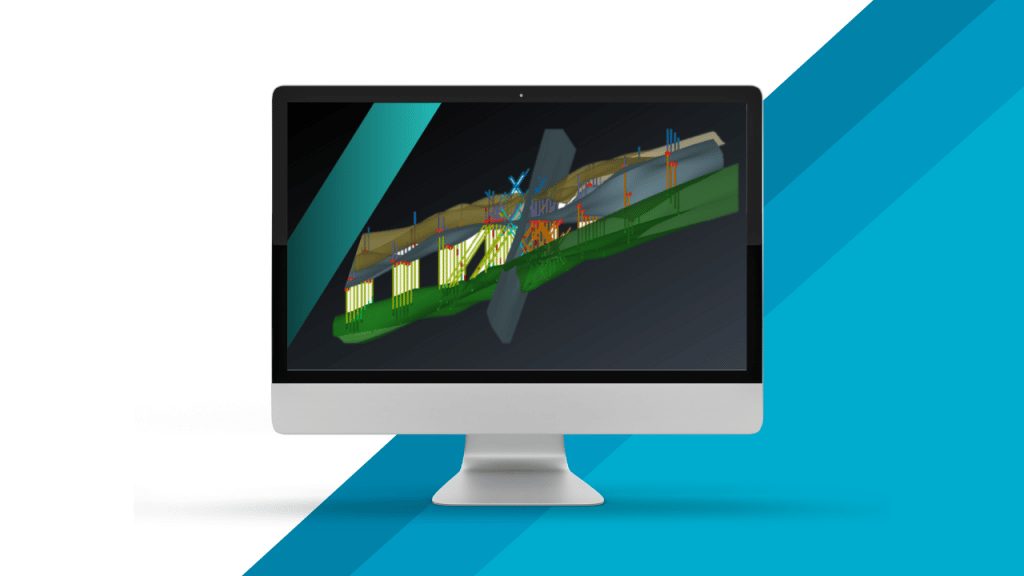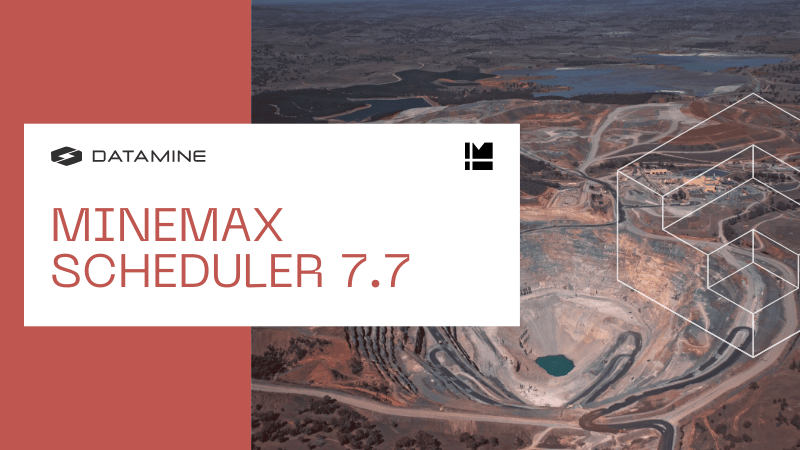Datamine Software is proud to announce the new version of Studio RM Pro 1.11 and Studio RM 1.11. This version is available to new and maintained customers. It offers exciting new features and improvements to a vast range of existing functionality.
Decisions about what goes into Studio products are based on ongoing discussions with customers who share their priorities and experiences. If you have needs or ideas relating to your Studio RM or Studio RM Pro, please share these with your local Datamine office.
More ways of Importing Variograms
To make Estimation easier in Studio RM Pro, we have created several ways of setting up your variogram model parameters:
- Importing from Supervisor – you can now import variograms directly from a Supervisor project, and these are populated into Advanced Estimation ready to run an Estimate. This removes the need to fiddle and convert CSV files and reduces potential errors in your estimation workflow.
- Import ESTIMA format parameters – If you previously ran your estimates using ESTIMA or ESTIMATE, maybe you want to create this exact estimate in COKRIG? For this, we have provided an import routine to convert files to the format required by COKRIG.
- Enter these directly into the application – a third way of creating variograms is by manually entering required values. We have also added an export function for archiving parameters and performed an overhaul of the user interface in Advanced Estimation to make it more intuitive and easier to use.
Drillhole Planner
Drillhole planner is now used at numerous sites where it is an essential part of the daily workflow for designing drilling programmes. We have included several enhancements in this release. You can now create drillholes from collar(s) and/or target(s) points for fan drilling, for example. This flexibility means that you can now create plan holes, from a collar position to intersect multiple target points that pass through a wireframe.
You can now have multiple lifts/drifts down any drillhole, which offers increased flexibility for planning long holes that deviate through the stratum. There are other improvements too, as outlined in the Release Notes.

Wireframe Selection
This update introduces significant changes to how wireframes can be interacted with. In this release, you have increased control over wireframe selection and can now select any part of a wireframe object. This allows for more focused interaction with wireframes when using wireframe editing commands. We now also have full undo and redo support for any changes made to wireframes.
When selecting wireframe data, you can now choose how wireframes are selected. For example, you might want to select individual wireframe triangles or parts of wireframes while doing detailed wireframe work. You might want to delete or separate a wireframe, or just run a Boolean command on a partial wireframe. This change is significant and will allow for a lot more flexibility when creating and editing structures.
Categorical and Grade Shells Commands
The Categorical and Grade Shells modelling engine uses machine learning to fit surfaces around irregular shapes, such as those you might see from intrusion, structurally controlled ore-bodies or grade shells above a cut off value.
The algorithm analyses samples to identify patterns and continuity, and constructs an ellipsoid representing the orientation and continuity signature of the modelled body. The ellipsoid might change shape and orientation depending on where you are. For example, there might be more prolate continuity in the east, with flatter dipping structures in the west. Ellipsoids can be autogenerated, or for more complex shapes you can guide and control how many and where these ellipsoids are placed. The ellipsoid(s) control the shape of the modelled surface, around the samples.
In this release, we present significant improvements, specifically around the speed of creation and accuracy of surfaces. There is a new approach for creating ellipsoids, which uses contact points to determine the shape and orientation of the ellipsoid. This means that the created ellipsoid is not influenced by the compositing length of the input samples. There is also an option that allows subdivision of the sample length. You can either pick Auto, where an optimal sample length is predetermined, or you can override the interval length and set a custom length.
We have also added support for additional point data, which means you have better control over the surface shape, especially in areas where there are gaps in the data. Other stability and ease of use enhancements are included, which are outlined in the Release Notes.

Vein from Surface and Contact Surface Commands
Improvements have continued for the Vein from Samples and Control Surface commands, and you can now use a prototype model hull shape to constrain the boundary of output surfaces and volumes. This is convenient for creating surfaces that feed into your geological model and you want to ensure that your surface is exactly the right size for block modelling.
Contour Faulting Improvements
The Contouring tools have been improved to support a finer resolution at fault contacts, which ensures smoother edges of fault blocks adjacent to faults. This enhancement means that surfaces created can be used to directly update a 3D geological model.
Secondary Clipping Limits
You are now able to set a forward and backward distance for secondary clipping regions. This means that data further away can be hidden from view, while retaining focus on data close to the section plane.
Curious to learn more? Select an option below:



